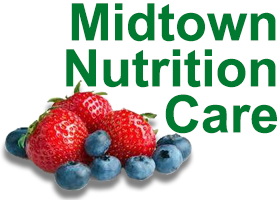HEALTHY EATING OVER 50
When reaching 50 years old metabolism slows and energy needs decline so it’s important to eat a healthy diet. The benefits of eating healthy include boosting immune response, good energy levels, optimal mental health, and better management of chronic illness.
HOW MUCH SHOULD YOU EAT OVER 50?
FOR MEN (average height 5’9”)
INACTIVE—2000 calories/day
SOMEWHAT ACTIVE—2300 calories/day
ACTIVE—2600 calories/day
FOR WOMEN (average height 5’4”)
INACTIVE—1600 calories/day
SOMEWHAT ACTIVE—1800 calories/day
ACTIVE—2100 calories/day
Calorie needs will vary if you are taller or shorter, overweight or underweight, extremely inactive or extremely active.
KEY NUTRIENTS OF A HEALTHY DIET OVER 50
WATER
Staying hydrated is important. Water aids in organ function, joint lubrication, regularity, mental sharpness and mood, and ideal body temperature. As we become older, we lose some of our ability to regulate fluid levels and our body’s sense of thirst declines. Try to sip water throughout the day and drink a glass with most meals. Add lemon slices, cut up cucumber or other fruits for a naturally infused beverage. Try to limit beverages that can lead to dehydration such as caffeinated drinks and alcohol. Older adults should drink 6-8 cups/day.
VITAMIN B12
After the age of 50, the stomach starts to produce less gastric acid making it harder to absorb B12, as well as producing less intrinsic factor which is needed for B12 absorption. Vitamin B12 plays a role in the nervous system, blood formation and DNA synthesis. Good sources include beef, chicken, turkey, fish, eggs, dairy, fortified cereals, and nutritional yeast.
VITAMIN D
We get most of our Vitamin D through sun exposure and certain foods such as fatty fish, egg yolk, and fortified milks. As we age the skin becomes less efficient at synthesizing Vitamin D. It’s common to take a Vitamin D supplement if your levels are low or you have limited sun exposure.
LOOK AT YOUR PLATE TO FIND THE NUTRIENTS YOU NEED
1/4-1/2 of plate, salads, greens, and vegetables.
1/4 of plate, grains and starches, especially whole grains and higher fiber foods.
1/4 of plate, lean protein (grilled, baked, broiled, skinless, trim visible fat).
1/4 or less of plate, fresh fruits.
Not on plate, dairy, such as 1 cup low fat/skim milk or 6 oz low fat yogurt.
